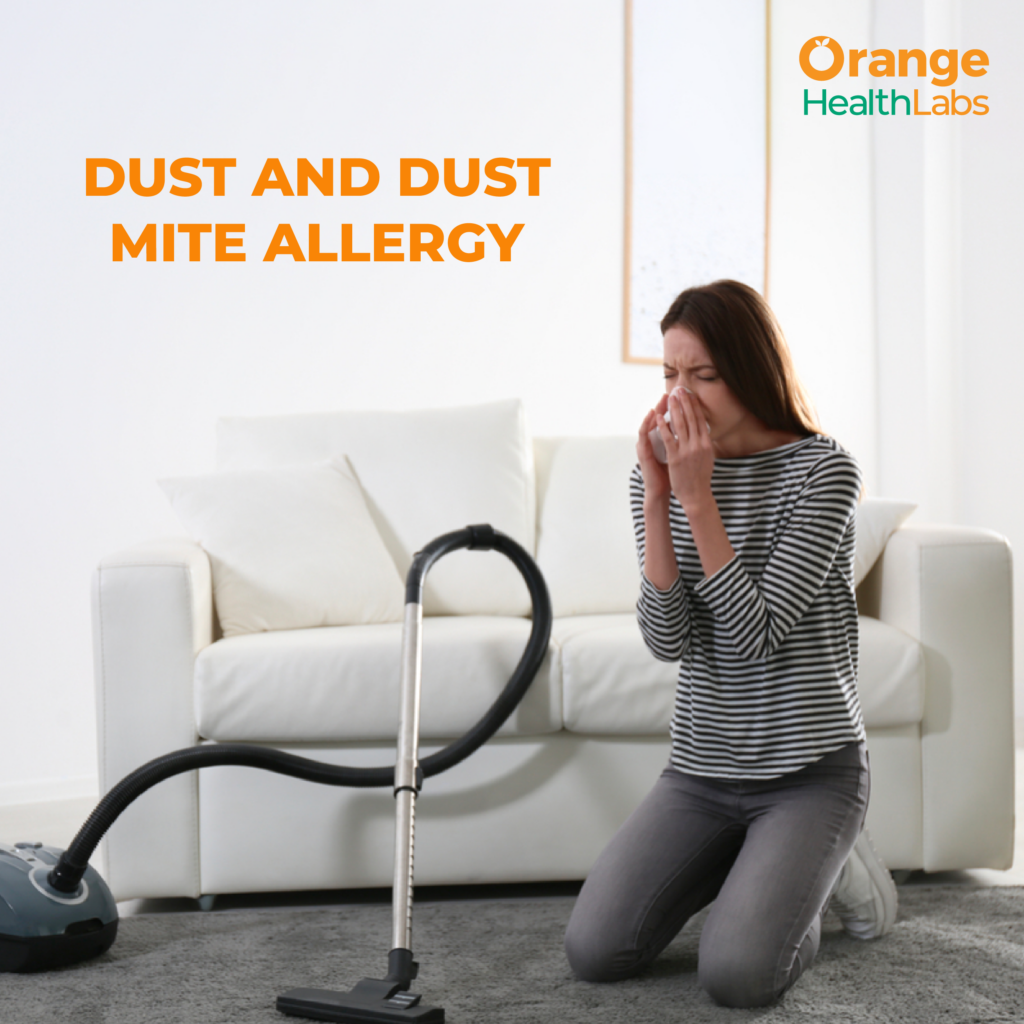Search for tests or checkups
SupportDust and Dust Mite Allergy: Understanding the Basics

Dust and Dust Mite Allergy: Understanding the Basics
A type of allergy that affects many people, especially in India, is dust and dust mite allergy or both together. In this blog, we educate you about what dust and dust mites are, what causes dust mite allergy, how to diagnose and how to manage it effectively.
The dust allergy disease burden in India is significant. According to the World Allergy Organization, allergic rhinitis (hay fever) is one of the most common allergies in India, with a prevalence of 20-30%. Dust mites are a common allergen for people with allergic rhinitis. In addition, the increasing levels of air pollution and poor indoor air quality in India have contributed to the growing burden of respiratory allergies, including dust allergy. This disease burden has a significant impact on the quality of life of affected individuals and the country's healthcare system.
What are Dust and Dust Mites?
Dust is a mixture of tiny particles, including hair, skin cells, and fibres from clothing, furniture, and other household items. Dust mites are tiny insects that live in household dust and feed on human skin flakes. They are prevalent in warm and humid environments, such as bedding, upholstery, and carpets.
What is Dust & Dust Mite Allergy and its Causes?
Dust mite allergy is caused by an immune system reaction to (tiny insects)dust mite proteins found in their faeces and body fragments. When a person with dust mite allergy inhales dust mite allergens, their immune system releases histamine, leading to symptoms such as sneezing, runny nose, itching, and coughing.
Symptoms of Dust & Dust Mite Allergy
The symptoms of Dust and Dust Mite Allergy are similar to other allergies and can include:
Sneezing
Runny or stuffy nose
Itching of the nose, throat, eyes, or skin
Coughing
Wheezing or shortness of breath
Itchy or watery eyes
Dark circles under the eyes
Fatigue
Diagnosis
To test for dust and dust mite allergy, a doctor or healthcare professional may perform:
Skin prick test: A small amount of allergen extract is placed on the skin and the skin is then pricked. If a red, raised bump appears, it indicates an allergy.
Blood test: A blood sample is taken to measure the levels of specific allergens in the bloodstream.
Challenge test: A person is exposed to a suspected allergen in a controlled environment, and the doctor then observes for symptoms.
It's important to consult with a doctor for a proper diagnosis and recommended treatment.
How to Manage Dust Mite Allergy
Here’s the good news: there are several steps you can take to reduce your exposure to dust mites and manage your dust mite allergy:
-Wash bedding, curtains, and stuffed toys in hot water (at least 54C) regularly.
-Use dust-proof covers for pillows and mattresses.
-Vacuum regularly, preferably using a vacuum cleaner with a HEPA filter.
-Keep the relative humidity in your home low (below 50%).
-Avoid upholstered furniture and carpets, if possible.
In addition to these preventive measures, your doctor may also recommend over-the-counter or prescription allergy medications to relieve your symptoms.
In conclusion, dust and dust mite allergy is a common condition that affects many people. Understanding the causes and symptoms can help you better manage your allergy and improve your quality of life. If you suspect you have a dust mite allergy, it's important to consult with a doctor for a proper diagnosis and recommended treatment. At Orange Health Labs, you can test for respiratory allergies using the following links
Bengaluru: Asthma and Respiratory Allergy Package Package in Bangalore + Home Collection (orangehealth.in)
Noida: Asthma and Respiratory Allergy Package Package in Noida near me. (orangehealth.in)
Hyderabad: Asthma and Respiratory Allergy Package Package in Hyderabad + Home Collection (orangehealth.in)

Understanding Impaired Fasting Glucose: Definition, Causes and Symptoms

The Significance of Full Body Health Checkups for Weight Management
